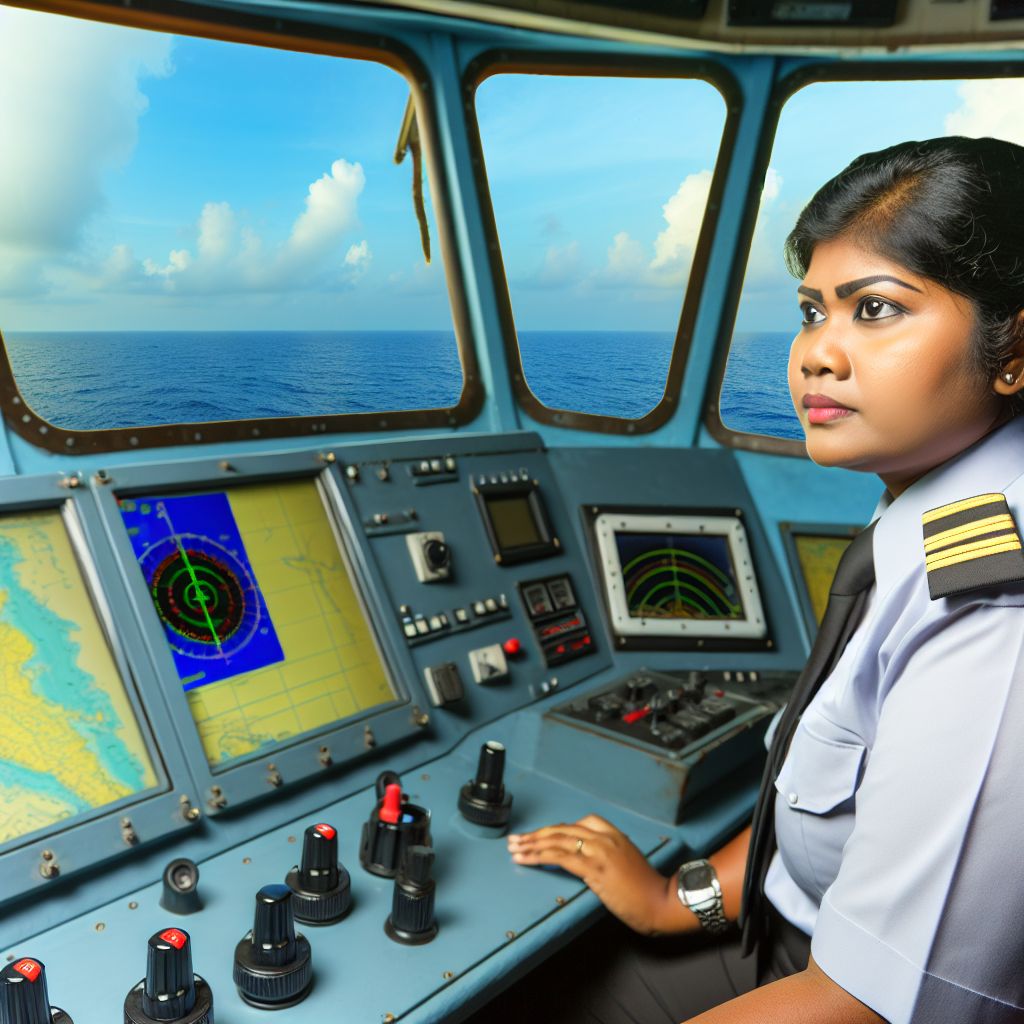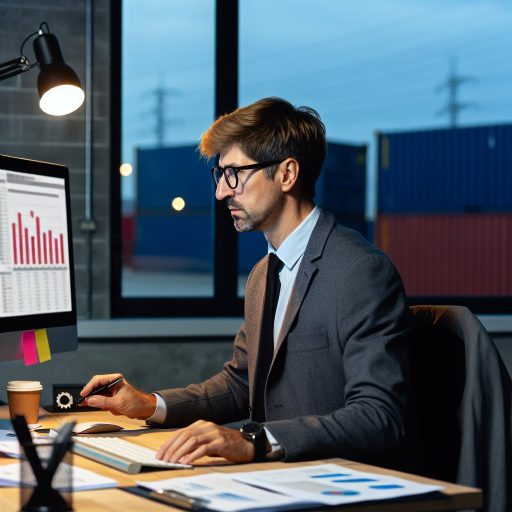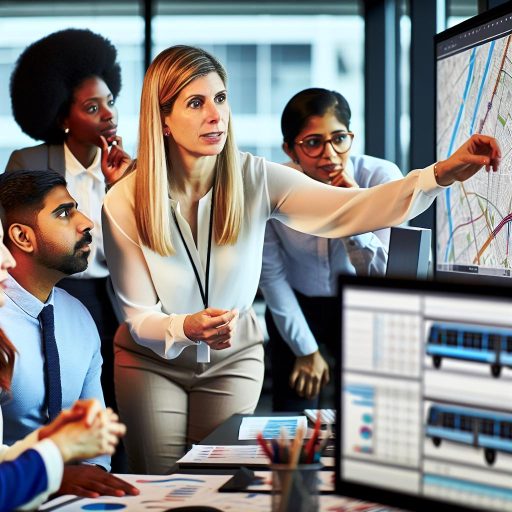Introduction:
Maritime pilots play a crucial role in guiding ships safely through waterways.
Their expertise is essential for ensuring the safety of vessels, crew, and cargo.
To carry out their duties effectively, maritime pilots rely on a variety of essential tools and equipment that aid in navigation and communication.
Navigation Tools:
One of the most important tools for maritime pilots is the Electronic Chart Display and Information System (ECDIS).
This system provides real-time information on a ship’s position, course, and speed.
It helps pilots navigate safely through narrow channels, busy ports, and changing weather conditions.
Communication Equipment:
Maritime pilots use VHF radios to communicate with other vessels, port authorities, and tugboats.
These radios are essential for transmitting important information, such as course changes, traffic conditions, and emergency alerts.
In addition to radios, pilots also rely on satellite phones for long-range communication.
Mooring Tools:
When guiding a ship into port, maritime pilots use mooring lines to secure the vessel to the dock.
These lines are essential for ensuring that the ship remains in place during loading and unloading operations.
Pilots also use winches and capstans to control the tension and movement of the mooring lines.
Safety Equipment:
Maritime pilots are trained to handle emergency situations, such as fires, collisions, and man overboard incidents.
To ensure their safety and the safety of others on board, pilots carry personal protective equipment, such as life jackets, helmets, and safety harnesses.
They also use firefighting equipment and first aid kits to respond to emergencies quickly and effectively.
Implications of Essential Tools for Maritime Pilots
Essential tools and equipment are vital for maritime pilots to navigate safely through waterways and carry out their duties effectively.
By using navigation tools, communication equipment, mooring tools, and safety gear, pilots can ensure the safe and efficient passage of ships in all conditions.
Portable Pilot Ladder:
Maritime pilots rely heavily on portable pilot ladders to safely board and disembark from ships.
- Regulations mandate the design and use of pilot ladders to ensure pilot safety.
- These regulations, like SOLAS, set strict standards for the construction of pilot ladders.
- One vital feature of a good quality pilot ladder is its sturdiness and stability.
- The steps should be evenly spaced and have anti-slip treads for secure footing.
- Properly secured spreader steps prevent the ladder from swaying during use.
Importance of Portable Pilot Ladder for Maritime Pilots:
A portable pilot ladder is crucial for maritime pilots as it allows them safe access to ships from pilot boats.
It ensures a smooth and efficient transfer of pilots between vessels, minimizing the risk of accidents and injuries.
Transform Your Career Today
Unlock a personalized career strategy that drives real results. Get tailored advice and a roadmap designed just for you.
Start NowRegulations and Standards Governing Pilot Ladders:
The design and use of pilot ladders are strictly regulated by international maritime organizations such as the International Maritime Organization (IMO) and national maritime authorities.
These regulations aim to establish consistent safety standards for pilot ladders across all ships and ensure the protection of pilots during embarkation and disembarkation.
Features of a Good Quality Pilot Ladder:
A good quality pilot ladder should meet the following criteria to ensure the safety and security of maritime pilots:
- Sturdiness and Stability: The pilot ladder should be robust and well-built to withstand the rigors of frequent use.
- Evenly Spaced Steps: The steps of the ladder should be evenly spaced to allow for comfortable climbing.
- Anti-Slip Treads: Non-slip treads on the steps provide added grip to prevent slipping accidents.
- Secured Spreader Steps: Spreaders at the top and bottom of the ladder help stabilize it and prevent swaying.
- Regular Inspection and Maintenance: Pilots should regularly inspect and maintain the ladder to ensure its reliability and safety.
Overall, a portable pilot ladder is an essential tool for maritime pilots, playing a critical role in their safe and efficient operations.
By adhering to regulations and choosing high-quality pilot ladders, pilots can effectively navigate the challenges of boarding and disembarking from ships while ensuring their own safety and well-being.
VHF Radio:
Communication between pilots, ships, and port authorities is essential for safe navigation.
VHF radios enable real-time coordination of ship movements and provide essential information to pilots.
Regular maintenance and testing of VHF radios are crucial for ensuring reliable communication.
- Communication between pilots, ships, and port authorities is essential for safe navigation.
- VHF radios enable real-time coordination of ship movements and provide essential information to pilots.
- Regular maintenance and testing of VHF radios are crucial for ensuring reliable communication.
Explore Further: Freight Handling in Different Industries
Electronic Chart Display and Information System (ECDIS)
ECDIS technology revolutionized the way maritime pilots navigate through accurate and real-time chart information.
Here’s how it aids them:
- Accuracy: ECDIS provides precise positioning information, helping pilots navigate safely through complex waterways.
- Real-time Updates: The system receives automatic updates, ensuring pilots have the latest navigational data at their fingertips.
- Integrated Information: ECDIS integrates various data sources like AIS and radar, enhancing situational awareness.
- Route Planning: Pilots can plan and optimize routes efficiently, considering factors like weather conditions and traffic.
Furthermore, ECDIS offers several benefits in terms of enhancing situational awareness and reducing the risk of navigation errors:
- Improved Decision Making: Pilots can make informed decisions based on up-to-date information displayed on the system.
- Collision Avoidance: ECDIS helps in identifying potential collision risks and taking proactive measures to avoid them.
- Reduced Human Error: By automating certain functions, ECDIS minimizes the chances of manual input errors during navigation.
- Efficient Passage Planning: Pilots can create detailed passage plans, ensuring a smooth and safe journey from start to finish.
However, to use ECDIS effectively, maritime pilots need to undergo specific training and certification requirements:
- Certified Courses: Pilots must complete approved ECDIS training courses to gain a thorough understanding of the system’s functionalities.
- Simulator Training: Hands-on simulator training is essential to practice using ECDIS in various scenarios before applying it in real-life situations.
- Regulatory Compliance: Pilots need to ensure they meet the regulatory standards set by the International Maritime Organization (IMO) for ECDIS usage.
- Continuous Learning: Keeping up with advancements in ECDIS technology through regular training and updates is crucial for pilots.
ECDIS plays a vital role in modern maritime navigation, offering advanced features that contribute to safer and more efficient voyages for pilots.
By mastering the use of ECDIS and staying informed about industry standards, pilots can navigate with confidence and precision in any challenging environment.
Discover More: Salary Expectations for Transportation Analysts
Binoculars
Binoculars are an essential tool for maritime pilots.
They play a crucial role in observing other vessels.
Binoculars also help in navigating aids and potential hazards.
There are different types of binoculars used by pilots.
Transform Your Career Today
Unlock a personalized career strategy that drives real results. Get tailored advice and a roadmap designed just for you.
Start NowNight vision binoculars allow for clear visibility in low light conditions.
Image-stabilized binoculars are popular among pilots.
They help reduce shaking and provide a steadier view of distant objects.
Regular maintenance and cleaning are necessary for binoculars.
Proper care ensures optimal performance and a longer lifespan.
It is vital for maritime pilots to maintain their binoculars.
Good condition helps avoid disruptions during navigation duties.
Improper maintenance can lead to blurry vision or lens fogging.
Malfunctioning mechanisms can be dangerous during maritime operations.
Cleaning the lenses with a soft cloth helps remove dirt.
Using a lens cleaning solution aids in clearing smudges for visibility.
Checking for signs of wear is important for prompt repairs.
Loose parts or misalignment should be addressed immediately.
Regularly inspecting binoculars maintains top condition for reliable performance.
Investing in high-quality binoculars enhances safety for pilots.
Proper care of binoculars improves efficiency during operations.
You Might Also Like: Logistics Operations: Balancing Cost and Efficiency
Electronic Distance Measuring Devices (EDMDs)
Electronic Distance Measuring Devices (EDMDs) are crucial tools for maritime pilots to accurately determine distances to navigational marks and other vessels.
With the advancement in technology, EDMDs have become a staple on board ships.
They provide precise measurements that aid in safe navigation.
Transform Your Career Today
Unlock a personalized career strategy that drives real results. Get tailored advice and a roadmap designed just for you.
Start NowHow EDMDs Assist Maritime Pilots:
- EDMDs use electronic signals to measure distances, showing pilots the exact range to objects in their vicinity.
- They help pilots avoid collisions by providing real-time information on the position of other vessels.
- EDMDs enhance situational awareness, allowing pilots to make informed decisions during navigation.
Accuracy and Reliability of EDMDs:
- EDMDs are known for their high accuracy, with modern devices capable of measuring distances with precision.
- These devices are reliable in various weather conditions, ensuring consistent performance during rain, fog, or rough seas.
- EDMDs are equipped with advanced sensors that can compensate for any environmental factors that may affect their readings.
Importance of Proper Calibration:
- Proper calibration of EDMDs is essential to ensure their accuracy and reliability.
- Regular calibration checks are necessary to maintain the precision of the devices and avoid any discrepancies in measurements.
- Calibration ensures that EDMDs provide correct information to pilots, helping them navigate safely in challenging conditions.
Electronic Distance Measuring Devices are indispensable tools for maritime pilots, offering accurate distance measurements and enhancing navigation safety.
Proper calibration and maintenance of these devices are vital to ensure their performance and reliability in various weather and sea conditions.
Uncover the Details: Future Trends in Transportation Planning

Personal Protective Equipment (PPE)
Maritime pilots are required to wear specific personal protective equipment to ensure their safety during boarding and disembarking operations.
These essential PPE items are crucial for protecting pilots from various risks they may encounter while on duty.
Essential PPE items for maritime pilots:
- Helmet: Protects the head from potential impact injuries during boarding and disembarking.
- Life jacket: Ensures floatation in case of falling overboard or emergency situations.
- High visibility vest: Increases visibility, especially during low light conditions or bad weather.
- Steel-toed boots: Offers protection against crushing injuries while working on slippery decks.
- Gloves: Provides grip and protection for hands during rope handling or ladder climbing.
Importance of PPE for maritime pilots:
Personal protective equipment plays a vital role in safeguarding maritime pilots from various potential hazards:
- Preventing fall accidents: Properly fitted life jackets and helmets reduce the risk of injuries in case of falls.
- Protection against harsh weather conditions: High visibility vests and gloves shield the pilots from extreme weather elements.
- Minimizing other risks: Steel-toed boots offer protection against accidental slips or falling objects on the deck.
Compliance with safety regulations:
Maritime pilots are required to comply with occupational safety regulations regarding the use of personal protective equipment while on duty.
These regulations are in place to ensure the safety and well-being of pilots during their operations.
By adhering to these regulations and wearing the necessary PPE, maritime pilots can effectively mitigate risks and enhance their overall safety while performing their crucial duties.
Flashlight and Searchlight:
Flashlights and searchlights play a crucial role in assisting maritime pilots in various aspects of their operations.
These tools are indispensable for signaling, identifying navigational marks, and illuminating areas on ships and in port areas.
Significance of Flashlights and Searchlights:
- Flashlights are essential for signaling to other vessels, especially during nighttime or low visibility conditions.
- They help pilots communicate with other ships and port personnel.
- Searchlights are used to identify navigational markers, buoys, and shore-based lights to ensure safe navigation through narrow channels and congested waterways.
- Both flashlights and searchlights are crucial for illuminating areas on deck or in the engine room for conducting inspections, maintenance, and emergency procedures.
Features of Reliable Flashlights and Searchlights:
- Waterproof and impact-resistant construction to withstand harsh maritime environments and rough handling during operations.
- Long battery life and powerful beam output to provide adequate illumination for extended periods without the need for frequent recharging or replacement.
- Ergonomic design for comfortable handling and easy operation, especially during adverse weather conditions or emergency situations.
Importance of Backup Batteries and Spare Bulbs:
- Having backup batteries and spare bulbs is crucial for maritime pilots to ensure continuity of operations in case of battery drainage or bulb failure.
- Regularly checking and replacing backup batteries and spare bulbs to maintain the functionality and reliability of flashlights and searchlights onboard.
- Carrying extra batteries and bulbs during long voyages or operations in remote areas where replacement options may be limited or unavailable.
Flashlights and searchlights are indispensable tools for maritime pilots, providing essential illumination and signaling capabilities for safe and efficient navigation.
By investing in reliable and well-maintained flashlights and searchlights, pilots can enhance the safety and effectiveness of their operations at sea and in port areas.
Weather Monitoring Equipment:
Maritime pilots use various weather monitoring equipment to assess sea conditions, wind speed, and visibility.
These tools include anemometers to measure wind speed, barometers to monitor air pressure, and radar for detecting weather patterns.
Weather monitoring equipment helps pilots make informed decisions about navigation routes and safety precautions.
By constantly monitoring weather conditions, pilots can avoid potential hazards such as storms, fog, or rough seas.
Continuous updates on weather information are crucial throughout the pilotage operation to ensure safe passage.
Satellite technology also plays a significant role in providing real-time data on weather conditions to maritime pilots.
The use of weather monitoring equipment enables pilots to anticipate changes in weather patterns and adjust their course accordingly.
Transform Your Career Today
Unlock a personalized career strategy that drives real results. Get tailored advice and a roadmap designed just for you.
Start NowOverall, these tools help ensure the safety of the vessel, crew, and cargo by providing accurate and timely weather updates.
Importance of Maritime Navigation Tools
Maritime pilots rely on key tools and equipment such as electronic chart systems, radar, and VHF radios to navigate safely.
Investing in high-quality tools and regular maintenance is crucial for the effectiveness of maritime pilotage operations.
Continuous training and updating of knowledge on the latest tools and technologies in the maritime industry are essential for success.
Additional Resources
Guidance on the Essential Critical Infrastructure Workforce: Ensuring …




